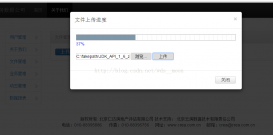在Spring应用启动时运行自定义业务的场景很常见,但应用不当也可能会导致一些问题。
基于Spring控制反转(Inverse of Control)功能用户几乎不用干预bean实例化过程,对于自定义业务则需要控制部分流程及容器,因此值得须特别关注。
1. Spring启动时运行自定义业务
我们不能简单包括自定义业务在bean的构造函数或在实例化任何对象之后调用方法,这些过程不由我们控制。请看示例:
|
1
2
3
4
5
6
7
8
|
@Componentpublic class InvalidInitExampleBean { @Autowired private Environment env; public InvalidInitExampleBean() { env.getActiveProfiles(); }} |
这里尝试在构造函数中访问自动装配的属性。当调用构造函数时,Spring bean仍没有全部初始化,因此导致NullPointerExceptions异常。下面介绍几种方式解决此问题。
1.1 @PostConstruct 注解
@PostConstruct注解用于方法上,实现bean初始化后立刻执行一次。需要注意的是,即使没有对象注入,Spring也会执行注解方法。
|
1
2
3
4
5
6
7
8
9
10
11
|
@Componentpublic class PostConstructExampleBean { private static final Logger LOG = Logger.getLogger(PostConstructExampleBean.class); @Autowired private Environment environment; @PostConstruct public void init() { LOG.info(Arrays.asList(environment.getDefaultProfiles())); }} |
上面示例可以实现Environment environment被安全注入,然后调用注解方法且不会出现空指针异常。
1.2 InitializingBean 接口
InitializingBean接口实现功能与上节类似。但需要实现接口并重写afterPropertiesSet方法。
下面重写前节的示例:
|
1
2
3
4
5
6
7
8
9
10
11
|
@Componentpublic class InitializingBeanExampleBean implements InitializingBean { private static final Logger LOG = Logger.getLogger(InitializingBeanExampleBean.class); @Autowired private Environment environment; @Override public void afterPropertiesSet() throws Exception { LOG.info(Arrays.asList(environment.getDefaultProfiles())); }} |
1.3 ApplicationListener 监听器
该方法可用于在Spring上下文初始化之后执行自定义业务。因此不针对特定bean,而是等待所有bean初始化之后。应用时需要实现ApplicationListener接口:
|
1
2
3
4
5
6
7
8
9
10
11
|
@Componentpublic class StartupApplicationListenerExample implements ApplicationListener<ContextRefreshedEvent> { private static final Logger LOG = Logger.getLogger(StartupApplicationListenerExample.class); public static int counter; @Override public void onApplicationEvent(ContextRefreshedEvent event) { LOG.info("Increment counter"); counter++; }} |
同样可以引入@EventListener注解实现:
|
1
2
3
4
5
6
7
8
9
10
11
|
@Componentpublic class EventListenerExampleBean { private static final Logger LOG = Logger.getLogger(EventListenerExampleBean.class); public static int counter; @EventListener public void onApplicationEvent(ContextRefreshedEvent event) { LOG.info("Increment counter"); counter++; }} |
上面示例使用ContextRefreshedEvent,具体选择哪种事件根据你的业务需要。
1.4 @Bean的初始化方法
该注解的initMethod属性可用于在bean初始化之后执行方法,示例:
|
1
2
3
4
5
6
7
8
|
public class InitMethodExampleBean { private static final Logger LOG = Logger.getLogger(InitMethodExampleBean.class); @Autowired private Environment environment; public void init() { LOG.info(Arrays.asList(environment.getDefaultProfiles())); }} |
既不要实现接口,也不要特定注解。通过注解定义Bean:
|
1
2
3
4
|
@Bean(initMethod="init")public InitMethodExampleBean initMethodExampleBean() { return new InitMethodExampleBean();} |
对应xml配置:
|
1
2
3
4
|
<bean id="initMethodExampleBean" class="com.baeldung.startup.InitMethodExampleBean" init-method="init"></bean> |
1.5 构造函数注入
如果使用构造器注入属性,可以简单地在构造函数中包括业务:
|
1
2
3
4
5
6
7
8
9
10
11
|
@Componentpublic class LogicInConstructorExampleBean { private static final Logger LOG = Logger.getLogger(LogicInConstructorExampleBean.class); private final Environment environment; @Autowired public LogicInConstructorExampleBean(Environment environment) { this.environment = environment; LOG.info(Arrays.asList(environment.getDefaultProfiles())); }} |
1.6 Spring Boot CommandLineRunner接口
Spring Boot 提供了CommandLineRunner接口,重写run方法,可以在应用启动时Spring应用上下文实例化之后调用。
|
1
2
3
4
5
6
7
8
9
10
11
|
@Componentpublic class CommandLineAppStartupRunner implements CommandLineRunner { private static final Logger LOG = LoggerFactory.getLogger(CommandLineAppStartupRunner.class); public static int counter; @Override public void run(String...args) throws Exception { LOG.info("Increment counter"); counter++; }} |
CommandLineRunner bean在相同上下文中可以定义多个,通过使用Ordered 接口或@Ordere注解确定顺序。
1.7 Spring Boot ApplicationRunner
与CommandLineRunner类似,Spring Boot 也提供了ApplicationRunner接口,重写run方法可以实现应用启动时执行自定义业务。另外其回调方法没有使用String参数,而是使用ApplicationArguments类的实例。
ApplicationArguments有方法可以获取可选参数及普通参数的值,参数前有–的表示可选参数。
|
1
2
3
4
5
6
7
8
9
10
11
12
13
|
@Componentpublic class AppStartupRunner implements ApplicationRunner { private static final Logger LOG = LoggerFactory.getLogger(AppStartupRunner.class); public static int counter; @Override public void run(ApplicationArguments args) throws Exception { LOG.info("Application started with option names : {}", args.getOptionNames()); LOG.info("Increment counter"); counter++; }} |
2. 执行顺序
多种方法对bean同时进行控制,对应执行顺序如下:
- 构造函数
- @PostConstruct注解方法
- InitializingBean的afterPropertiesSet()
- @Bean或xml中标注的初始化方法
读者可以自行测试进行验证。
3. 总结
本文介绍多种方式实现在Spring启动时实现自定义业务。通过对比不同方式实现加深对Spring的理解,掌握更多控制bean实例化过程的方式。以上为个人经验,希望能给大家一个参考,也希望大家多多支持服务器之家。
原文链接:https://blog.csdn.net/neweastsun/article/details/115491393














